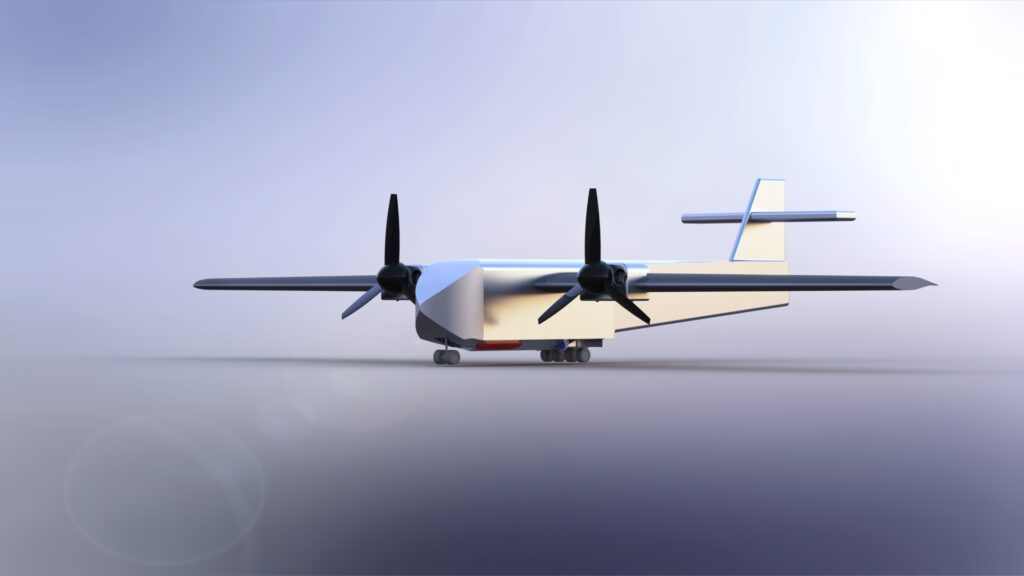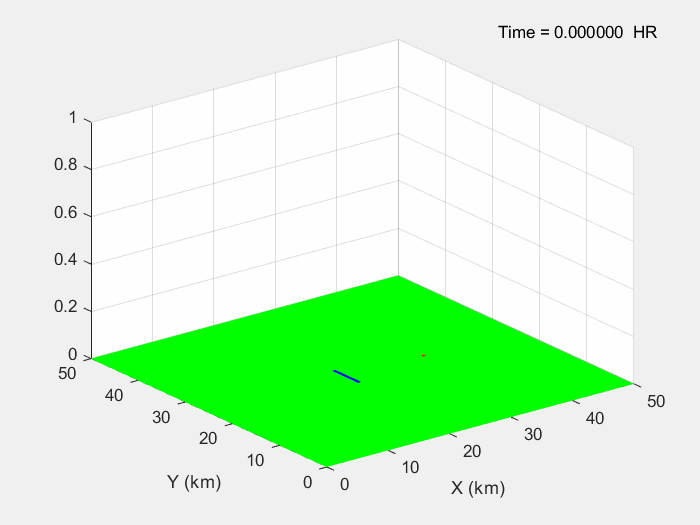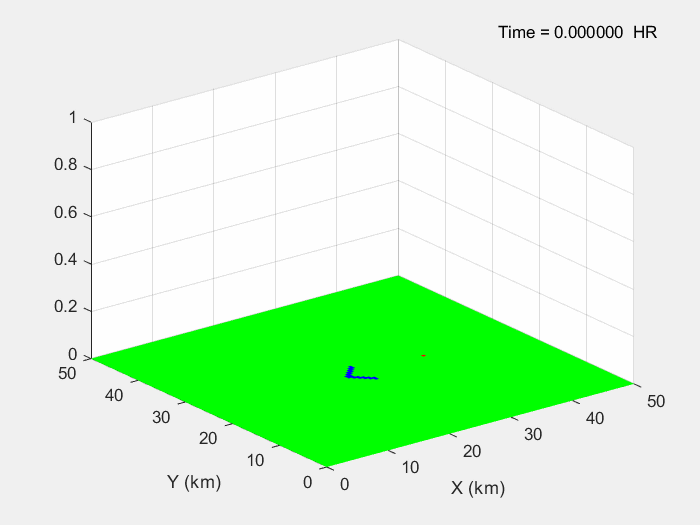Project Category: Mechanical

Join our presentation
About our project
With the increasing intensity and frequency of wildfires, it has become evident that current resources are often limited in their ability to combat all active fires. The goal of this project to investigate the feasibility of using a fleet of drones to deliver water or fire retardant to forest fires. Current aerial firefighting options are limited to large, manned aircraft and helicopters which are often expensive and in short supply. A strategy using a fleet of smaller drones as a means of aerial firefighting will be developed along with a conceptual design of the resulting aircraft.
Download our poster
Details about our design
DRONE SPECIFICATIONS
| Engine: 2 x 222 kW Piston Engines | Cruise Speed: 103.3 km/h | |
| Total Drone Mass: 1723 kg | Skimming Speed: 86.7 km/h | |
| Fuel Capacity: 100.3 kg | Skimming Distance: 127.1 m | |
| Payload: 866.2 L water | Required Fleet Size: 20 Drones | |
| Wingspan: 19.8 m | Range: 515.8 km |
HOW OUR DESIGN ADDRESSES PRACTICAL ISSUES
Combating wildfires is an expensive and dangerous endeavor. The risk to human life is elevated for everyone, including aircraft pilots, ground crews and the public living in the fire’s path. Our water bomber drone fleet provides a rapid response to wildfires to limit their spread while decreasing the risk to human life and the costs associated with fighting wildfires.
WHAT MAKES OUR DESIGN INNOVATIVE
Present day aerial firefighting assets are all manned by flight crews. Utilizing unmanned aircraft as aerial firefighters can reduce operational costs and risk to human life. There has been little previous usage of drones in the firefighting industry and studying the feasibility of drones along with optimization of drone design and strategy can help forest fire agencies better fight fires.
WHAT MAKES OUR DESIGN SOLUTION EFFECTIVE
This drone water bomber design is effective because it maximizes the water flow rate per drone, while minimizing the overall size and weight. This results in the most cost-effective solution, while leveraging the advantages of drones, such as larger fleet numbers, economies of scale for production, and flexibility to access smaller sized water bodies.
HOW WE VALIDATED OUR DESIGN SOLUTION
To validate the design solution, computer simulations and algorithms were utilized to optimize the drone design and fire response strategy.
The drone design was optimized using a genetic algorithm to mimic natural selection which selected the best drone from thousands of different drone designs for different parameters such as lake size, wing design, and water capacity. The best drone design was selected as the most cost-effective solution which maximized the flow rate while minimizing the overall size.
The fire response strategy was validated using a computer simulation showing fire spread based on factors such as wind speed, vegetation, and burn probability, developed by our group and project sponsor, Dr. Schuyler Hinman. This simulation modeled the different lake locations, air tanker bases and a randomized fire location in BC, then used the optimized drone design to calculate the response time to contain the fire spread.
FEASIBILITY OF OUR DESIGN SOLUTION
This project demonstrated that it is feasible to utilize a fleet of drone water bombers to fight wildfires. During our project, we were fortunate to have the opportunity to discuss our project with a member of the research and innovation team at BC Wildfire Services and present our strategy and drone design. BC Wildfire Services gave us positive feedback for our project and the direction of our strategy and drone design. The current design is still a conceptual design and further iterations to the design will be required to complete the detailed design prior to drone prototyping and production.
Meet our team members






Partners and mentors
We want to thank our project sponsor Dr. Schuyler Hinman for the mentorship and advice he provided over the duration of the project. We would also like to thank Mike McCulley, senior officer of Research and Innovation at BC Wildfire Service for giving us time to present our project and giving us valuable feedback.
Our photo gallery






References
- F. Westin, ROTO 85FS AL UAV ENGINE, GRABCAD, 2018. Available: https://grabcad.com/library/roto-85fs-al-uav-engine-1
- Propeller-48, GRABCAD, 2020, Available: https://grabcad.com/library/propeller–48
- CTV News YouTube Channel, July 14 2021. Video available at: https://www.youtube.com/watch?v=IVAjM7XXI54&t=1s
- D. Howe, Aircraft conceptual design synthesis. London and Bury St Edmunds: Professional Engineering Publishing, 2000.
- S. Hinman, Stochastic Probability Wildfire Spread Simulation. Calgary: University of Calgary.
